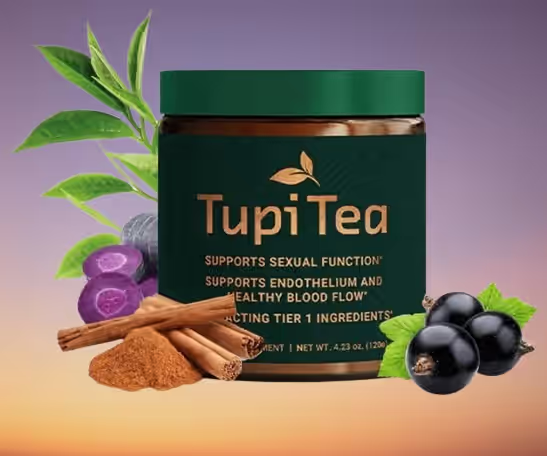Table of Contents
Tea stands as the second most widely consumed beverage in history, right after water. When comparing pu erh tea vs black tea, many tea enthusiasts find themselves wondering which offers better health benefits and flavor profiles. While both originate from the same plant, they follow dramatically different processing paths that create distinct characteristics and potential health advantages.
What is pu erh tea exactly? Unlike black tea, which emerged during China’s Ming Dynasty as the country’s first fully oxidized tea, pu erh undergoes a unique microbial fermentation process after the leaves are dried and rolled. This special fermentation not only allows pu erh to improve with age like fine wine but also enables some varieties to retain freshness for up to fifty years. Black tea, however, gained international popularity for its ability to preserve its flavor during long transatlantic journeys.
Despite their shared ancestry from the Camellia sinensis plant, specifically the Yunnan variety for pu erh, these teas differ significantly in their antioxidant profiles. In fact, pu erh’s extended fermentation creates an environment where antioxidant levels increase higher than in any other tea. Throughout this guide, we’ll explore the fascinating differences between these two beloved teas, examining everything from their distinct processing methods to their unique health benefits, helping you decide which might better suit your wellness goals in 2025.
Understanding the Origins and Processing
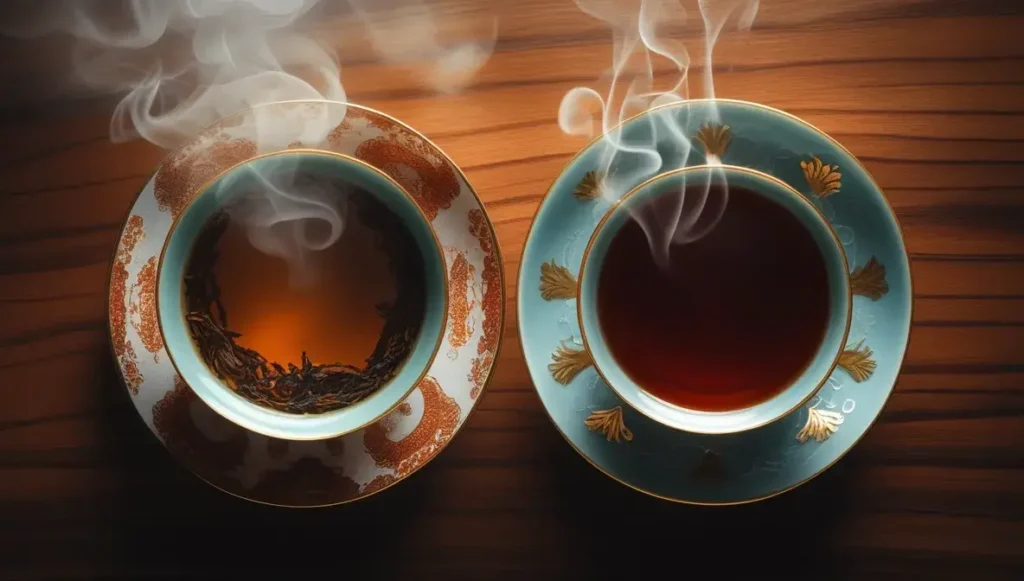
Despite originating from the same plant, pu erh and black tea follow remarkably different processing journeys that create their distinctive characteristics.
Camellia Sinensis: The Common Source
Both pu erh and black tea begin their life as leaves from the Camellia sinensis plant. Nevertheless, pu erh tea typically comes from the large-leaf Assamica variety (Camellia sinensis var. assamica) primarily grown in Yunnan Province. This variety produces leaves with small bulbs, indicating higher quality. Generally, the leaves chosen for premium pu erh come from older trees and are often the longest and oldest leaves on the plant. Additionally, high-quality teas grow at elevations up to 2,200 meters, where slower growth enhances flavor development.
Black Tea Oxidation vs Pu Erh Fermentation
The fundamental difference between these teas lies in their processing methods. Black tea undergoes complete oxidation (often 100%) but no fermentation. Its production involves withering, rolling, oxidation, and firing, with the entire process typically completed within weeks.
Conversely, pu erh tea experiences both oxidation and microbial fermentation. Initially, the leaves are processed similarly to black tea but undergo shorter withering periods. After pan-frying, rolling, and sun-drying, pu erh leaves retain crucial moisture that enables subsequent fermentation. This moisture creates conditions for microbial activity that transforms the chemical composition of the leaves. Furthermore, this makes pu erh the only tea that truly undergoes fermentation, with this process sometimes continuing for months or even years.
Raw vs Ripe Pu Erh: Key Differences
Pu erh tea comes in two distinct varieties: raw (sheng) and ripe (shou). Raw pu erh undergoes slower, traditional fermentation after being pressed into cakes or bricks. This aging process can take many years, during which the tea develops increasing complexity and depth.
Ripe pu erh, introduced around 1973, undergoes accelerated fermentation through a “wet piling” process. This method involves piling the leaves, covering them with damp cloth, and regularly turning them to distribute temperature evenly. The controlled environment promotes specific microbial activity that mimics natural aging. Subsequently, this creates darker leaves that brew into an almost inky liquid, versus raw pu erh’s coppery gold liquor. Moreover, while raw pu erh offers a fresher taste with potential bitterness, ripe varieties deliver smoother, earthy flavors with notes of wet wood or leather.
👉 Grab Your Premium Pu Erh Tea Today For Unmatched Flavor 👈
Taste and Aroma Profiles Compared
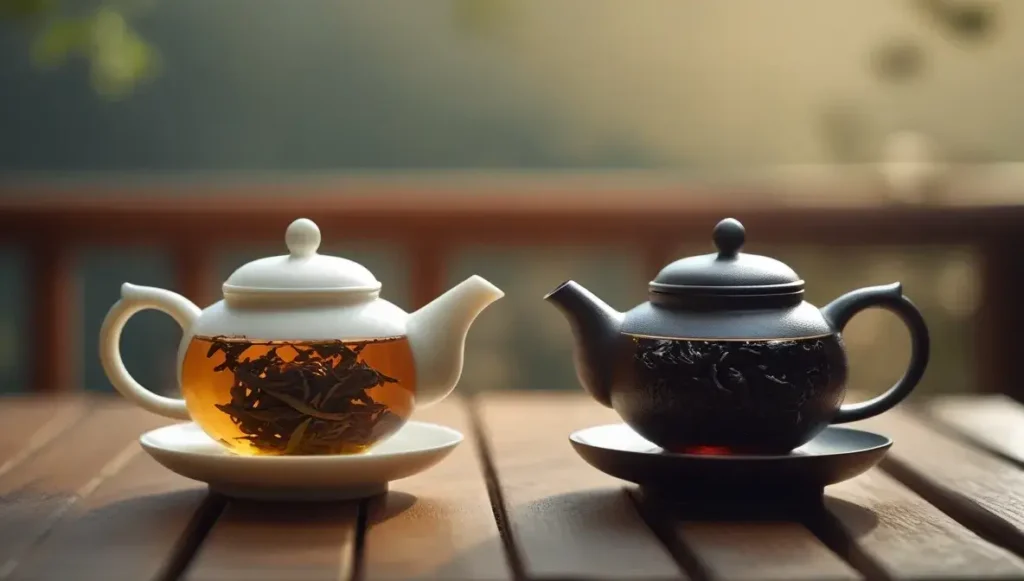
The taste profiles of these teas reflect their distinct processing methods, offering tea enthusiasts completely different sensory experiences.
Pu Erh Tea vs Black Tea Taste: Earthy vs Malty
Black tea typically delivers bold, malty flavors with a straightforward profile. Its taste remains relatively stable throughout its shelf life. Certainly, black tea offers rich aromatics ranging from fruity Keemun to smoky Lapsang Souchong. Many varieties present notes of malt, grains, caramel, and occasionally floral or citrus undertones.
Pu erh tea, nonetheless, presents a more complex flavor landscape. Ripe pu erh offers a thick, full-bodied mouthfeel with deep, earthy notes reminiscent of wet wood, leather, and dark chocolate. Raw pu erh initially shares similarities with green tea, presenting grassy and floral notes.
Aging Effects on Pu Erh Flavor
Throughout aging, raw pu erh undergoes remarkable transformation. Young sheng varieties often taste bitter and astringent. Eventually, after 1-5 years, the color shifts from dark green to yellow-brown as bitterness gradually weakens. Between 5-10 years, the aroma evolves from floral to woody, creating a smoother, mellower experience.
After a decade, properly aged raw pu erh develops golden brightness with sweet, mellow characteristics. Remarkably, well-stored raw pu erh continues gaining complexity for up to 25 years.
Blended Black Teas vs Pure Pu Erh
Notably, black tea blends like English Breakfast or Earl Gray feature additional aromas from added spices. Essentially, these blends enhance black tea’s natural profile. Pure pu erh, primarily valued for its natural complexity, rarely incorporates additional ingredients. Instead, pu erh enthusiasts seek the tea’s intrinsic evolution through proper aging techniques.
Health Benefits: Antioxidants, Digestion, and More
Beyond their distinct flavors, both teas offer unique health benefits stemming from their different processing methods.
Antioxidant Content: Theaflavins vs Fermentation Compounds
While black tea contains theaflavins and thearubigins formed during oxidation, pu-erh tea develops unique compounds through microbial fermentation. These compounds in pu-erh undergo further breakdown in the small intestine, creating beneficial metabolites that interact with gut bacteria.
Digestive Health: Pu Erh’s Microbial Edge
Pu-erh tea extracts have been shown to maintain intestinal homeostasis and alleviate inflammation caused by antibiotics. Research indicates pu-erh significantly promotes the proliferation of beneficial bacteria like Bifidobacterium and Lactobacillus in the intestinal tract. This prebiotic effect helps nourish healthy gut bacteria, potentially improving overall digestive function.
Heart Health and Cholesterol Effects
Both teas may improve cardiovascular health, although through different mechanisms. Studies show pu-erh tea significantly lowers LDL cholesterol and triglycerides while increasing HDL (good) cholesterol. This dual action helps reduce atherosclerotic risk factors. Furthermore, pu-erh’s polyphenols demonstrate anti-inflammatory properties that protect against atherosclerosis.
Weight Management and Metabolism Boost
Research indicates pu-erh tea may assist with weight management by inhibiting fat absorption and increasing fat breakdown. In one study, participants consuming pu-erh tea extract daily for 12 weeks experienced improved body weight, BMI, and reduced abdominal fat measurements.
👉 Taste The Best Black Tea For A Richer Morning 👈
Caffeine and Daily Use Considerations

Understanding caffeine content helps tea enthusiasts make informed choices about which tea best suits their daily routine and energy needs.
Pu Erh Tea vs Black Tea Caffeine: Which Has More?
Both teas contain comparable caffeine levels, though with slight variations. Raw pu erh typically contains 30-70 mg of caffeine per 8-ounce cup, whereas black tea ranges from 40-70 mg. Ripe (shou) pu erh often contains slightly less caffeine than raw varieties. Accordingly, brewing method and tea quality impact these levels—cup-sized tea bags yield higher caffeine than loose leaf preparations.
Energy Boost vs Calm Focus
The primary difference lies in how each tea affects your body. Black tea delivers a moderate yet lasting energy boost. Comparatively, pu erh provides a steadier, gentler lift due to its fermentation process. This fermentation creates GABA, a compound associated with relaxation and improved focus. Consequently, pu erh drinkers often experience “calm alertness” without the jitters common with higher-caffeine beverages.
Best Time to Drink Each Tea
For morning energy, either tea works well, though black tea’s higher caffeine makes it particularly suitable for early hours. Pu erh shows special benefits when consumed after meals—drinking it about 30 minutes after eating aids digestion and helps break down fatty foods. Throughout the afternoon, pu erh shines around 2-3 PM to avoid mid-day energy slumps. For evening consumption, choose well-aged ripe pu erh with lower caffeine levels and avoid drinking either tea within 3-4 hours of bedtime.
Comparison Table
| Characteristic | Pu Erh Tea | Black Tea |
|---|---|---|
| Plant Source | Camellia sinensis (Yunnan variety/Assamica) | Camellia sinensis |
| Processing Method | Oxidation + microbial fermentation | Complete oxidation (100%), no fermentation |
| Processing Time | Months to years | Weeks |
| Taste Profile | Ripe: Earthy, wet wood, leather, dark chocolate Raw: Initially grassy and floral | Bold, malty, with fruity/smoky notes depending on variety |
| Caffeine Content | 30-70mg per 8oz (raw) Lower in ripe variety | 40-70mg per 8oz |
| Energy Effect | Steady, gentle lift with “calm alertness” | Moderate but lasting energy boost |
| Aging Potential | Up to 50 years, improves with age | Does not improve with age |
| Antioxidant Profile | Higher levels due to fermentation | Contains theaflavins and thearubigins |
| Digestive Benefits | Promotes beneficial bacteria growth, aids digestion | Not specifically mentioned |
| Cardiovascular Benefits | Lowers LDL cholesterol, increases HDL, reduces triglycerides | May improve cardiovascular health |
| Best Time to Consume | After meals, afternoon (2-3 PM) | Morning hours |
| Color When Brewed | Raw: Coppery gold Ripe: Dark, inky | Not specifically mentioned |
Conclusion: Deciding Between Pu Erh Tea and Black Tea
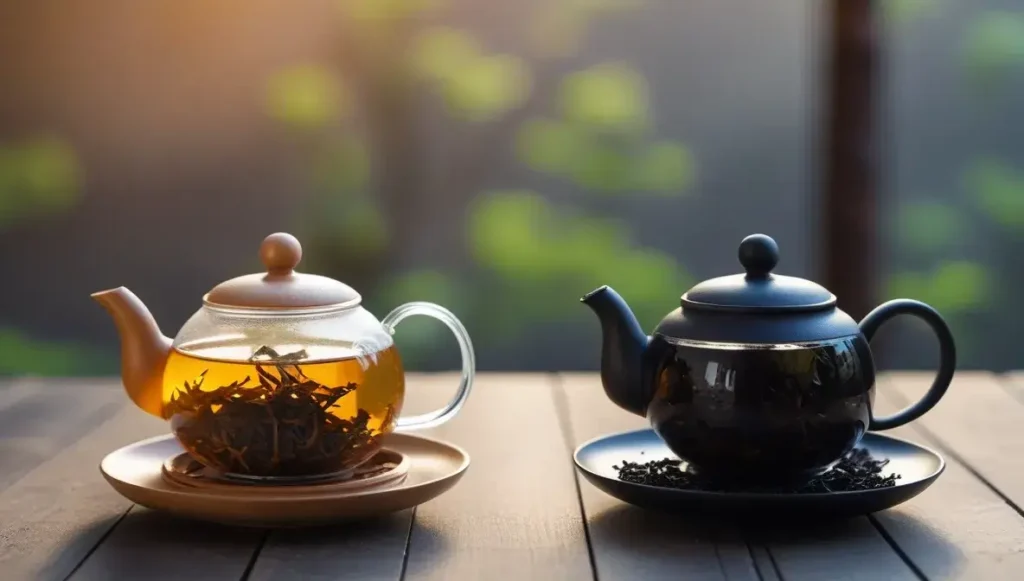
After examining both pu erh and black tea thoroughly, we can see these traditional beverages offer distinct advantages despite sharing the same botanical origin. Pu erh stands out particularly for its unique fermentation process, creating a complex beverage that actually improves with age—something quite rare in the tea world. Black tea, conversely, delivers consistent flavor and reliable benefits that have made it a worldwide favorite for centuries.
Health-conscious tea drinkers should consider their specific wellness goals when choosing between these options. Pu erh clearly excels in digestive support due to its prebiotic effects and beneficial impact on gut bacteria. Additionally, its impressive ability to improve cholesterol profiles makes it worthy of consideration for anyone focused on heart health. Black tea certainly offers its own antioxidant benefits through theaflavins and thearubigins, though pu erh’s fermentation compounds appear to provide more extensive benefits.
Taste preferences undoubtedly play a crucial role in this decision. We appreciate black tea for its straightforward, bold character that remains relatively stable throughout its shelf life. Pu erh, however, rewards patient drinkers with evolving complexity and depth as it ages—changing from potentially bitter youth to mellow sweetness over decades.
Caffeine sensitivity should also guide your choice. Though both contain similar amounts, the energy experience differs significantly. Black tea delivers that familiar morning boost many of us seek, while pu erh offers a gentler “calm alertness” that works wonderfully after meals or during afternoon work sessions.
The ultimate question—which is better?—depends entirely on your personal priorities. Those seeking digestive support, cholesterol management, or a fascinating aging process might prefer pu erh. Tea drinkers valuing consistency, straightforward flavor, and widespread availability might choose black tea. Perhaps the best approach involves enjoying both, appreciating their unique characteristics and benefits as part of a varied tea collection. Either way, both represent remarkable expressions of the world’s most beloved leaf.
👉 Discover The Best Pu Erh Tea For Daily Wellness 👈
Key Takeaways
Both pu erh and black tea offer unique health benefits, but their distinct processing methods create different advantages for tea enthusiasts seeking optimal wellness.
• Pu erh excels in digestive health – Its unique fermentation process promotes beneficial gut bacteria growth and aids digestion when consumed after meals.
• Black tea provides consistent energy – Delivers reliable 40-70mg caffeine per cup with straightforward, malty flavors that remain stable over time.
• Pu erh offers superior cholesterol benefits – Studies show it significantly lowers LDL cholesterol while increasing HDL, making it ideal for heart health.
• Caffeine effects differ significantly – Black tea gives traditional energy boosts, while pu erh provides “calm alertness” without jitters due to fermentation compounds.
• Aging transforms pu erh completely – Unlike black tea, pu erh improves with age for up to 50 years, evolving from bitter youth to mellow complexity.
The choice ultimately depends on your wellness priorities: choose pu erh for digestive support and cholesterol management, or black tea for consistent energy and familiar flavors. Both deserve a place in any health-conscious tea lover’s collection.
FAQs
Q1. What are the main differences between Pu Erh tea and Black tea? Pu Erh tea undergoes microbial fermentation, while Black tea is fully oxidized. Pu Erh can age and improve over time, developing complex flavors, whereas Black tea maintains a consistent taste. Pu Erh offers unique digestive benefits and may have a more significant impact on cholesterol levels.
Q2. How does the caffeine content compare between Pu Erh and Black tea? Both teas contain similar amounts of caffeine, typically ranging from 30-70mg per 8-ounce cup. However, Pu Erh tends to provide a gentler, more sustained energy boost, often described as “calm alertness,” while Black tea offers a more traditional energizing effect.
Q3. Which tea is better for digestive health? Pu Erh tea has a distinct advantage for digestive health. Its fermentation process promotes the growth of beneficial gut bacteria and aids in digestion, especially when consumed after meals. Black tea, while beneficial in other ways, doesn’t offer the same level of digestive support.
Q4. Can Pu Erh tea help with weight management? Yes, research suggests that Pu Erh tea may assist with weight management. It has been shown to inhibit fat absorption and increase fat breakdown. In one study, participants consuming Pu Erh tea extract daily for 12 weeks experienced improvements in body weight, BMI, and reduced abdominal fat measurements.
Q5. How do the taste profiles of Pu Erh and Black tea differ? Black tea typically has a bold, malty flavor with potential fruity or smoky notes depending on the variety. Pu Erh, on the other hand, offers a more complex taste profile. Ripe Pu Erh is known for its earthy, deep flavors reminiscent of wet wood or leather, while raw Pu Erh can range from grassy and floral when young to sweet and mellow when aged.
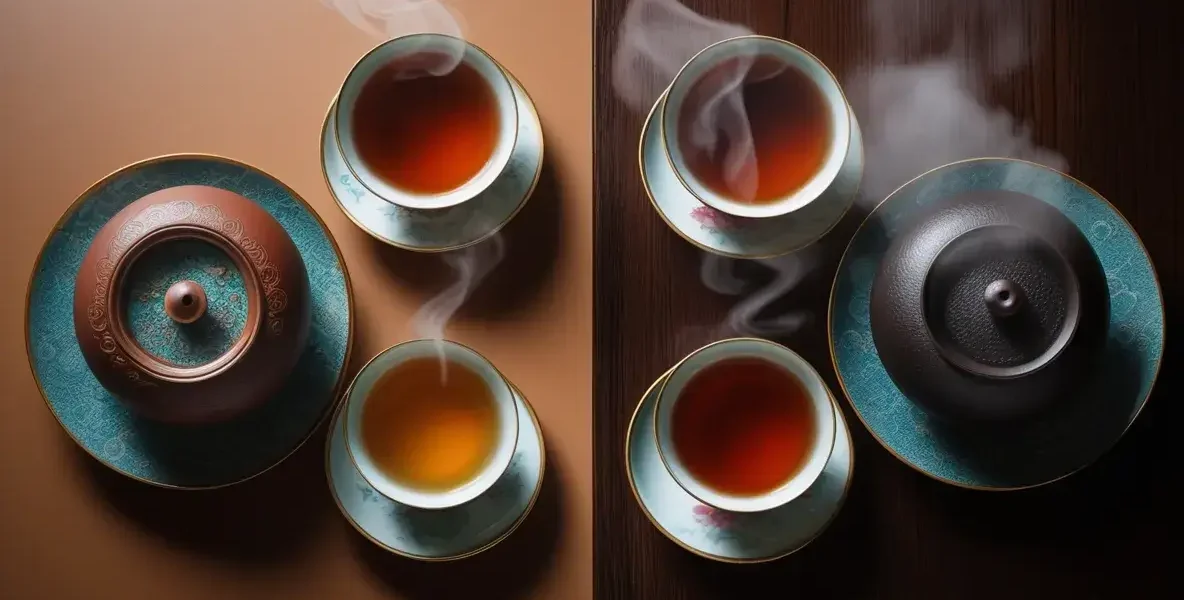

![Pu Erh Tea vs Green Tea: Which is Better for Daily Health? [2025] pu erh tea vs green tea](https://www.goteaworld.com/wp-content/uploads/2025/10/pu-erh-tea-vs-green-tea-150x150.webp)
![Jasmine Tea vs Green Tea Benefits: Which Gives Better Health Results? [2025] jasmine tea vs green tea benefits](https://www.goteaworld.com/wp-content/uploads/2025/09/jasmine-tea-vs-green-tea-benefits-150x150.webp)









